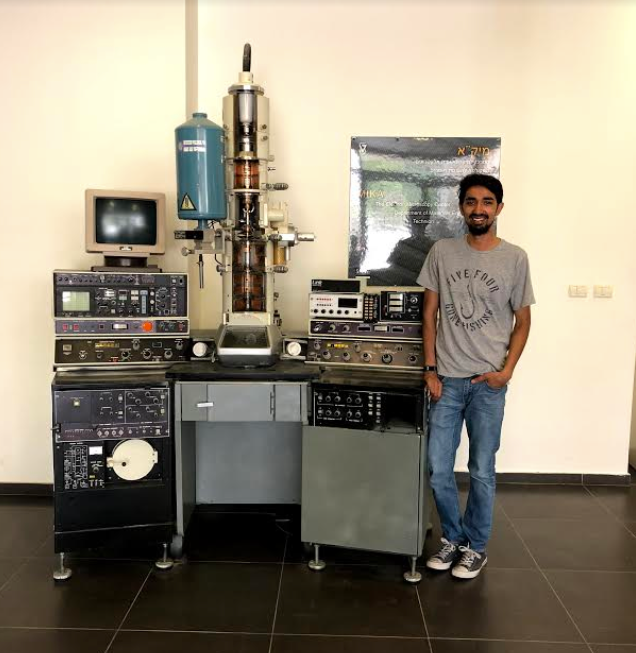
As part of a US-Israel funded collaborative research project this summer, Boise State materials science and engineering graduate student Bibek Karki visited the Technion – Israel’s prime technology institution, in Haifa. For two and a half weeks Karki worked alongside Israeli project partners, professor Doron Shilo, Eilon Faran and graduate student Asaf Mizrahi.
The objective of the joint project is to extend the understanding of how and why magnetic shape memory (MSM) alloys change shape in response to magnetic fields. Boise State professor Peter Müllner and his research group have studied these materials for years. As part of this project, the Boise State team characterizes the structure of Ni-Mn-Ga MSM alloys at the atomistic scale using X-ray diffraction and transmission electron microscopy. The team in Haifa, with Shilo as lead investigator, performs dynamical loading experiments to develop an understanding of the material kinetics. The researchers aim at incorporating these two approaches to explain the dynamic properties of MSM alloys.
“The synthesis of material science and the material kinetics is essential in describing two distinct dynamical behaviors of MSM alloys,” Karki said. “The visit to Israel helped advance my understanding of the MSM material beyond the crystallography and nanostructural behavior. The studies and hands-on experiment on kinetic relation helped me evaluate nano-to-macro scale deformation kinetics of the material.”
While in Israel, Karki gave a talk to engineering faculty and students. He and his hosts discussed ideas to formulate the common ground between the two experimental approaches. Karki also investigated the experimental methods developed by the Israeli researchers. He further performed experiments and analyzed data to study material dynamics.
“International student exchange is essential for our research,” said Müllner. “We have specialized in making MSM alloys in pure form as single crystals – quasi as metal gems – and in characterizing their structural, magnetic and magneto-mechanical properties. We can learn from other researchers who specialize in other areas.”
Müllner sends almost all of his graduate students to work in foreign laboratories. Likewise, students and scientists from many countries in Europe, Asia, and Central America have worked in the Magnetic Materials Laboratory at Boise State. “Besides the intellectual exchange, students also get to see how other institutions organize research and education and how these structures and methods are deeply rooted in the culture of the host country,” Müllner said.